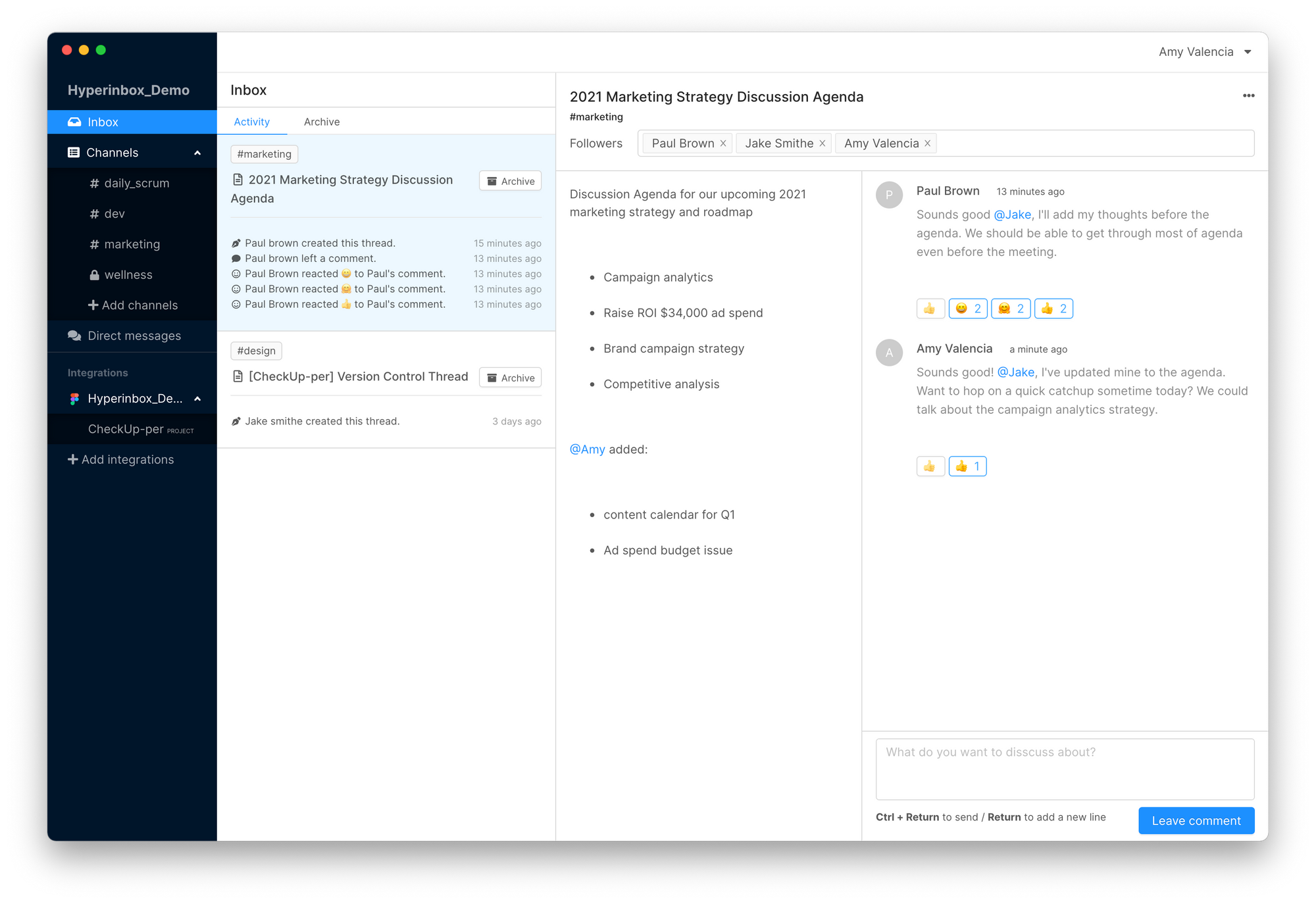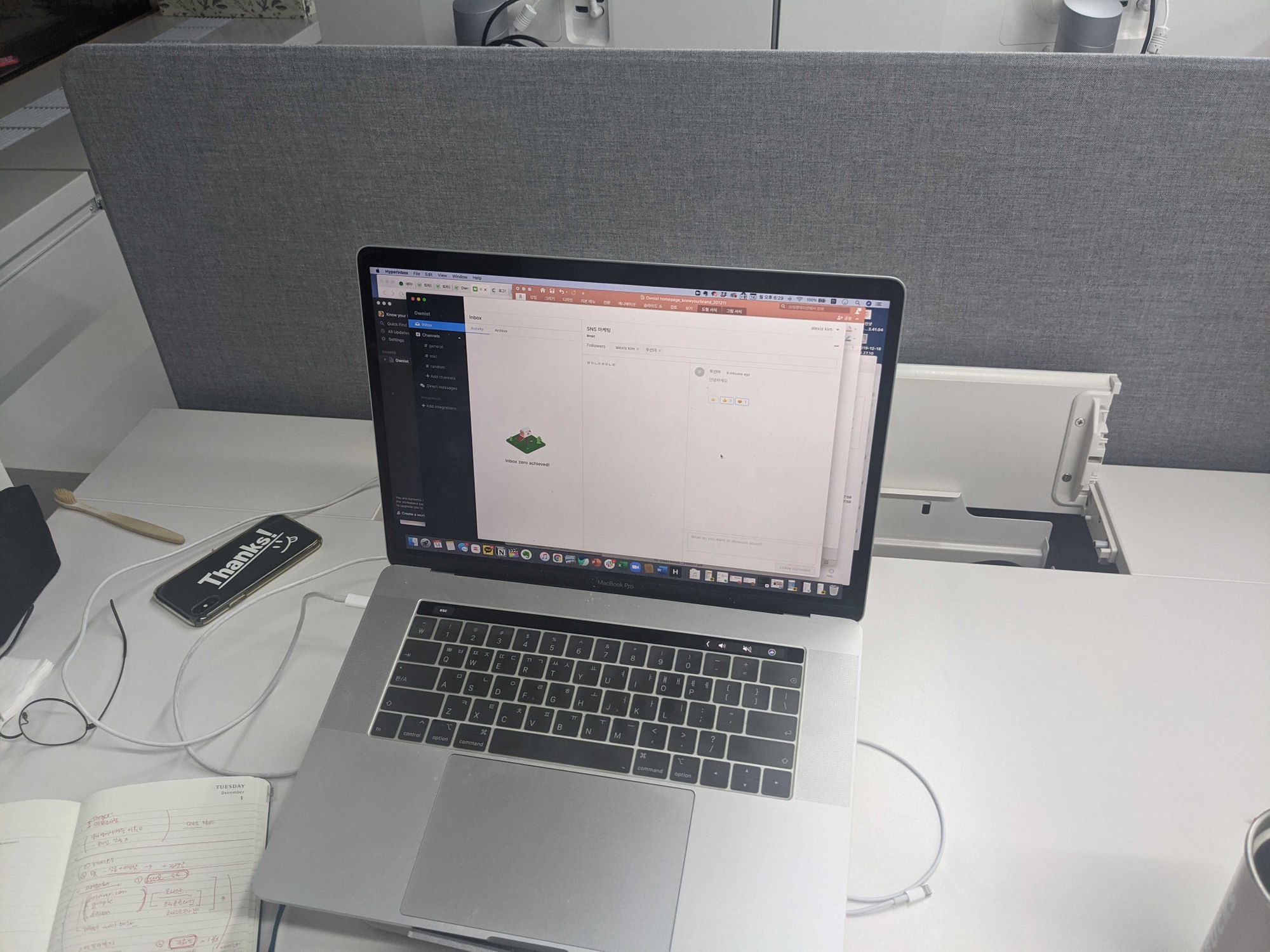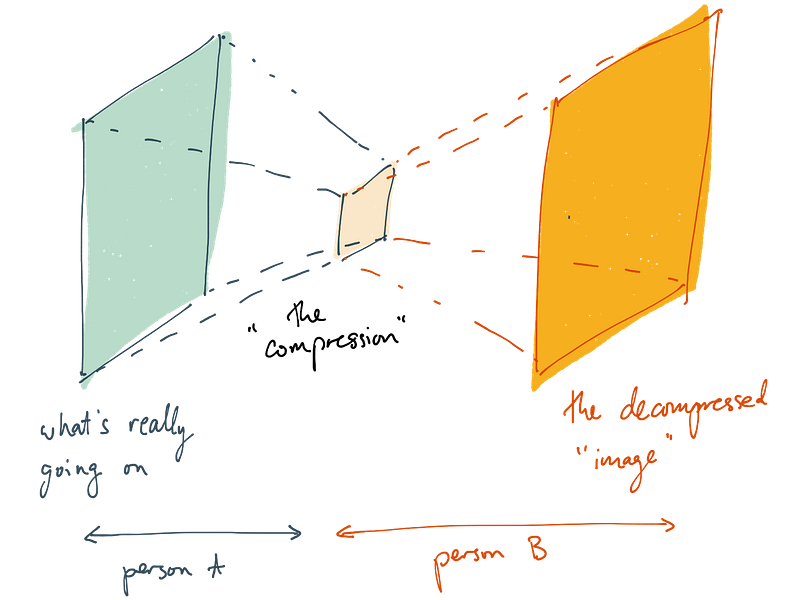It's the most wonderful time of the year!
As we look back year 2020, we accomplished some major milestones: We changed our name from Pixelic and built Hyperinbox into a full-fledged product, raised another pre-seed round from Bon Angels Venture Partners, and finally, launched our first MVP!

Hi there 👋
Welcome to the last newsletter of Hyperlog for 2020! We appreciate your support and interest in our journey. Thanks!
As we look back year 2020, we accomplished some major milestones: We changed our name from Pixelic and built Hyperinbox into a full-fledged product, raised another pre-seed round from Bon Angels Venture Partners, and finally, launched our first MVP!
We have two weeks left to 2020. Let's finish it strong. 💪
–Chris
Co-founder
👩💻 New from Hyperinbox
This week, we launched our first MVP of Hyperinbox! 🔥 It's a monumental moment for all of us here at the Hyperinbox team. We just made a big step towards our mission to make remote work awesome. 👇👇
In our first MVP, we have three big features:
1. Inbox Zero experience

Have you ever felt that you're distracted by notification? It's challenging to manage remote work when you're short of deep, focused hours to accomplish the most important tasks of the day.
Hyperinbox allows you to hit Inbox Zero for all of your notifications and conversations in no time, so you have more time for your most important tasks. It's like a newsfeed for all of your apps– Figma, Github, Gitlab, Slack, Asana, and much more.
2. Threads as a first-class citizen

Real-time messaging in a remote setting can be messy. Keeping up with conversations is a job in itself, taking too much time away from our day.
Hyperinbox threads are a first-class citizen. With threads you can focus on specific subjects and have discussions efficiently.
Learn how to use threads to increase team productivity through Hyperinbox threads!
3. Figma integration

Ever wonder why is it so hard to get non-designers on Figma? Yes, you can share the Figma link, but do they ever get on and know exactly where to look & comment?
Hyperinbox allows even non-Figma users to comment on Figma projects. All you need is to connect your Figma to the Hyperinbox workspace.
If you're a Figma user and want a better design feedback process, sign up for our waitlist and check Figma on our survey to skip the waiting line. 😉
😌 Customer Updates
We have our first users! Members from the Ownist team in South Korea started using Hyperinbox for their collaboration this week. Here's a few pics we took for the monumental moment for our team 🙌 📸


🗞 More news
WorkRemotely – remote team directory

We recently launched our side project, WorkRemotely. It's a simple directory of teams that work remotely. If you're remote, add your team to the list! :-)
Hyperfocus – a free virtual co-working space for remote workers
Hyperfocus is a virtual "Study with Me" sessions where we gather once every week in a Zoom meeting room and work quietly together for a few hours while having the cameras on and mics muted. It's a good way to give yourself extra motivation to get to the flow state. If you want to join us, sign up for free here 👉 Hyperfocus Room.
✍️ What we wrote
How to Time Block and Why it Matters

Have you ever felt that you just don’t have enough time to finish your work? Now that we have more distractions; smartphones, meetings, and for those who work from home – kids, beds, and TVs – it is hard to manage time effectively.
I had the same problem. I was constantly distracted by my iPhone next to me, and if I lost sight of the clock, I’d spend hours browsing the Internet. I was frustrated, to say the least. As a founder, every day counts.
I researched methods for more effective time management and found that time blocking was not only the most productive but also easy enough to practice daily.
No Office Rules

From the start, we never needed an office, and we won’t need one in the future. Not having an office allowed us to be flexible and save money on rent. It’s one of the best choices we’ve made so far, which is why any team should go office-less.
📖 What we're reading
Information Compression

When Person A has to explain a complex idea to Person B, she'll invariably leave out much detail and simplify it too much. This is called “information compression.” It often leads us to work on the wrong problems, build the wrong solutions, or take too long to complete things when it could have been done at a fraction of the time. How do we ensure we communicate clearly? Alexandr Wang, CEO of Scale, explains in the memo.






